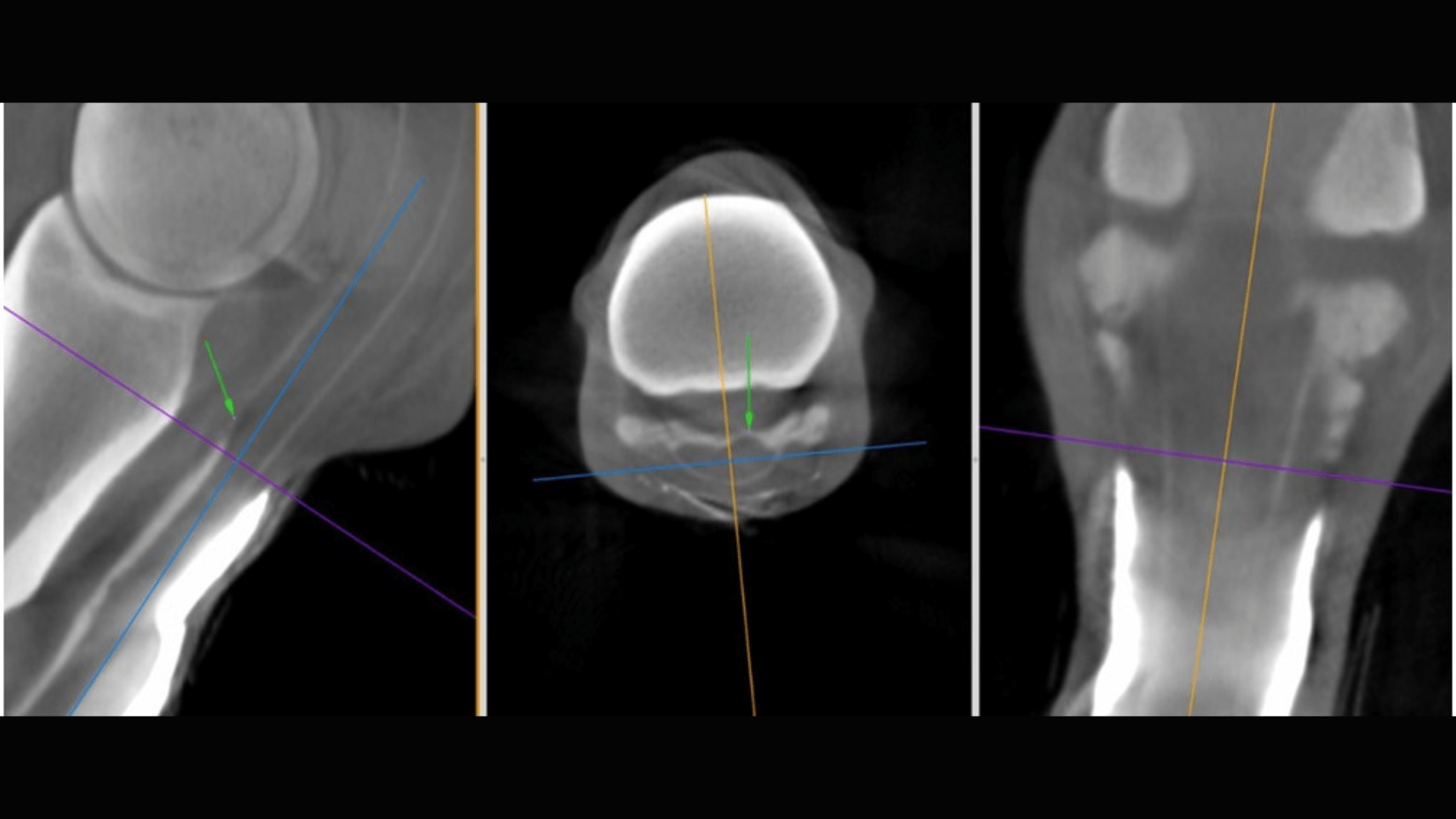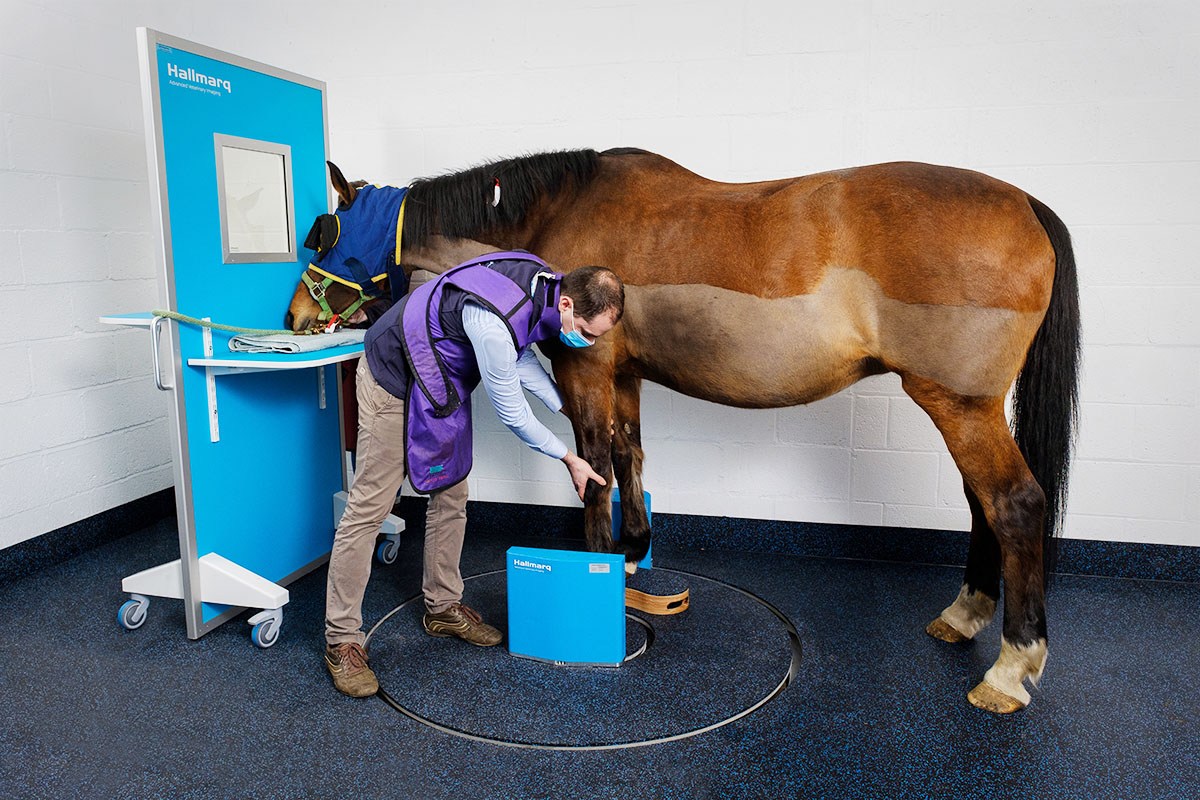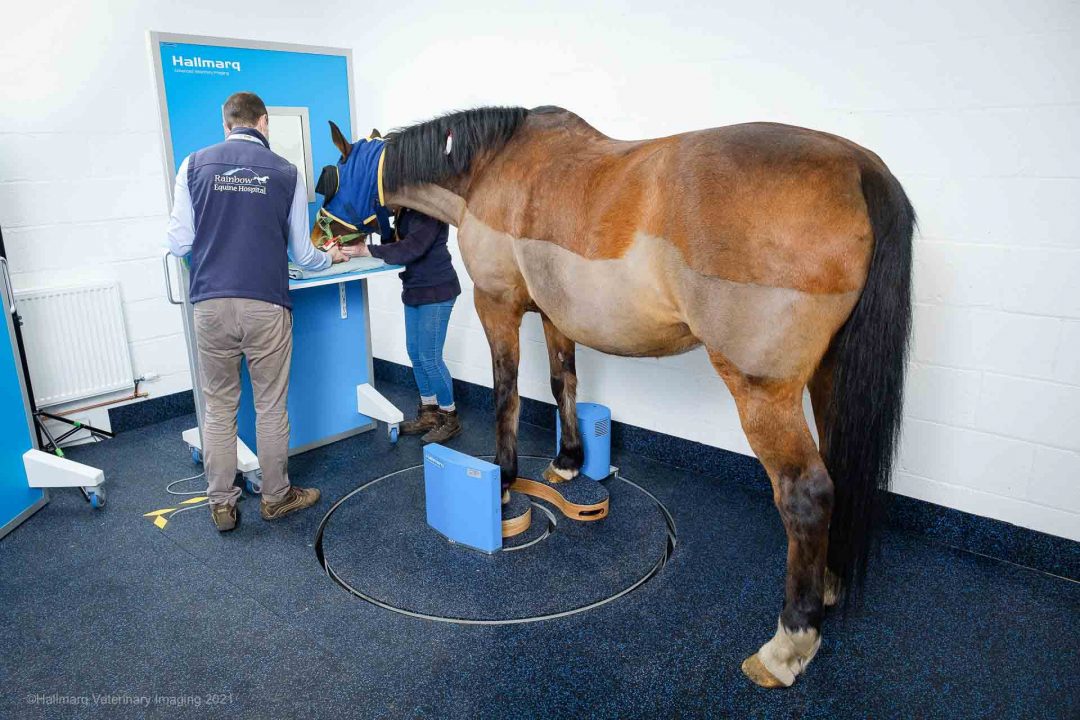For veterinarians navigating the complexities of equine lameness – which poses a significant caseload in many practices – 3D CT scans have become a game-changer. Unlike traditional radiographs and ultrasounds that offer limited windows into the horse’s body, CT scans such as those captured with Vision CT, provide a three-dimensional, high-resolution map of the musculoskeletal system. And, this newfound clarity empowers veterinarians to diagnose lameness with accuracy, leading to more effective treatment plans and improved outcomes for horses.
Demystifying Lameness: The Power of CT Scans
Traditional imaging techniques often leave veterinarians with a puzzle that has missing pieces. Radiographs provide flat, two-dimensional pictures that can obscure subtle fractures or joint abnormalities. While ultrasounds, although effective for soft tissue evaluation, struggle to penetrate deep within bones. It’s here that 3D CT scans bridge this gap.
Here’s How 3D CT Scans Revolutionize Equine Lameness Diagnosis:
- Unveiling the hidden landscape: Imagine peering inside a horse’s leg and seeing a detailed map of bones, joints, ligaments, and, even soft tissues. CT scans provide this remarkable level of detail, allowing veterinarians to identify even the most subtle of abnormalities that might be missed with other methods.
- Sub-millimeter precision: Gone are the days of blurry images leaving room for doubt. 3D CT scans boast exceptional resolution, revealing hairline fractures, ligament tears, and bone pathologies with unmatched clarity. This level of precision allows for definitive diagnoses and targeted treatment plans.
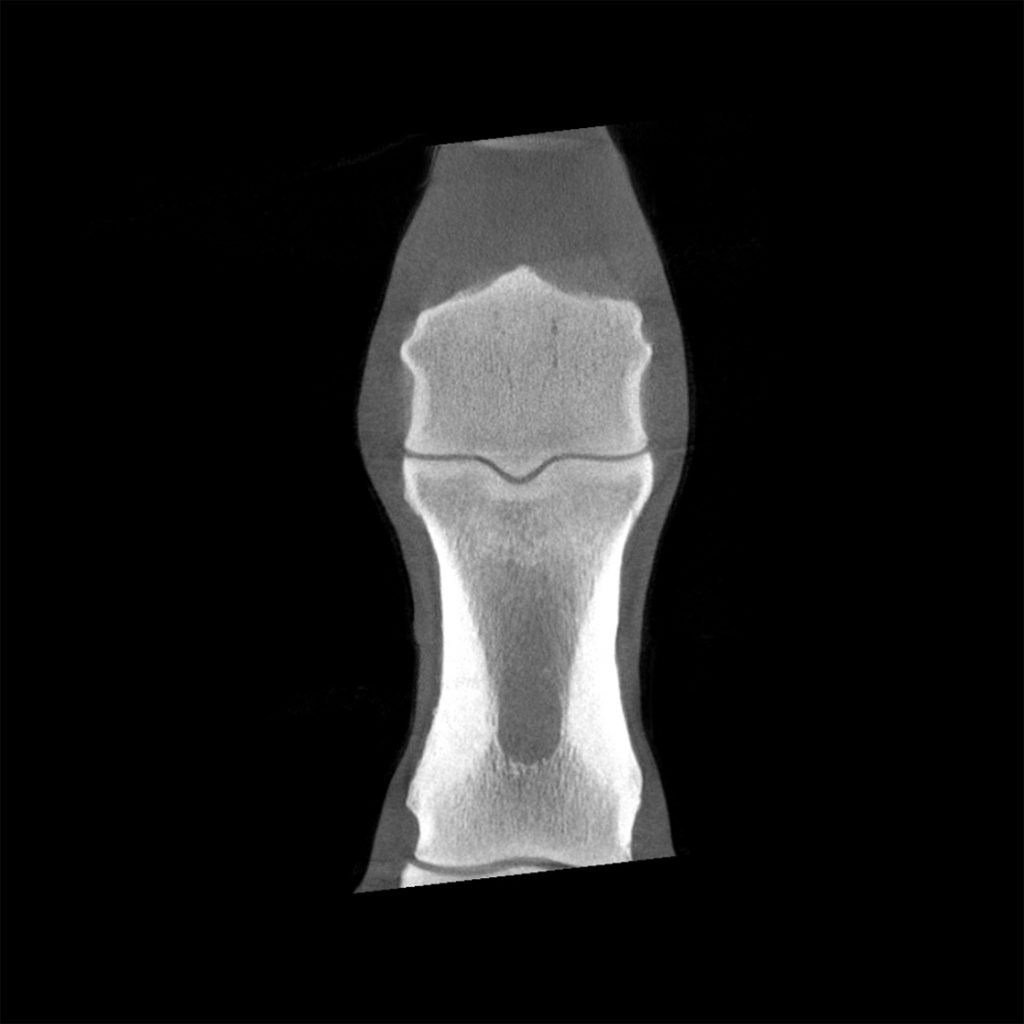

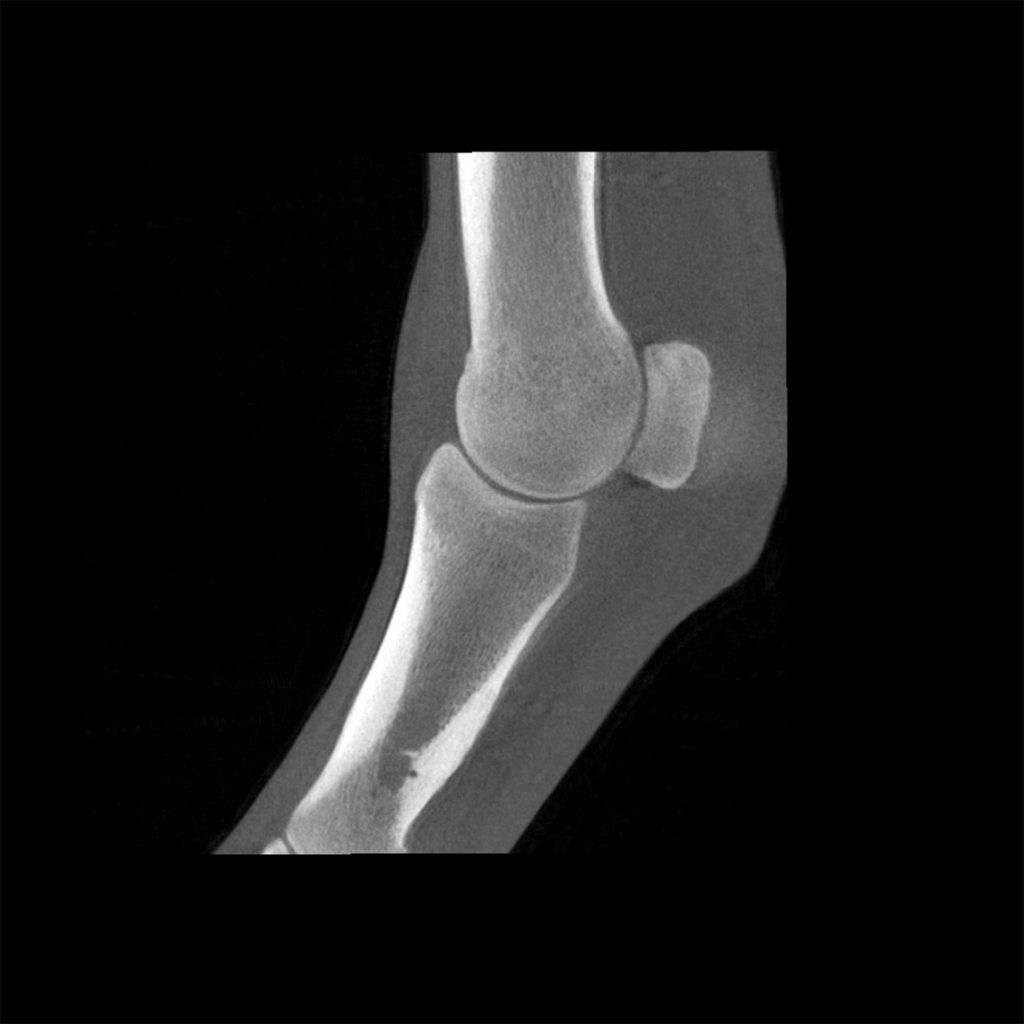
Beyond Diagnosis: The Advantages of 3D Imaging
The benefits of 3D scanning with Vision CT extend way beyond simply identifying the source of lameness. The detailed 3D images serve as a powerful tool for:
- Precise Surgical Planning: For complex fractures or delicate joint procedures, a high-resolution roadmap is invaluable. Vision CT’s images empower surgeons to plan every move with meticulous precision, leading to improved surgical outcomes and faster recovery times for horses.
- Personalized Treatment Strategies: By revealing subtle changes in bone density and differentiating between various pathologies, CT scans help vets create more targeted treatment plans. This tailored approach, whether with medication, rehabilitation, or targeted injections, leads to a quicker and more complete recovery for the horse.
“Vision CT is now our first port of call for complex proximal sesamoid fractures where we have concerns over configuration. Generating data sets is quick and easy, and image resolution can be just as impressive as MRI.”
Henry O’Neill, Donnington Grove Equine Vets, UK
Take a look at a recent case study where a 2-year-old thoroughbred gelding was admitted with a one-week history of right forelimb lameness. Suspected of having a solar abscess, the horse underwent MRI followed by standing surgery and then 3D imaging with Vision CT. Happily, the patient was discharged to continue recovery and rehabilitation at home.
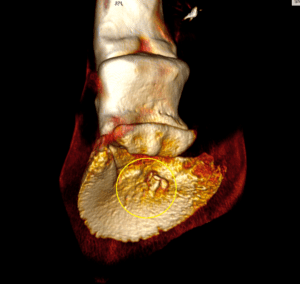
Investing in the Future of Equine Care
Investment in 3D CT scan technology offers long-term benefits to your equine practice:
- Enhanced Diagnostic Accuracy: Reduced or missed diagnoses cost money and prolong patient discomfort. With improved and quicker diagnoses, you can expect better outcomes, which benefit the horses and reduce additional interventions in the long run.
- Elevated Standard of Care: By offering the most advanced 3D diagnostic tools available, you demonstrate your commitment to providing exceptional care for your equine patients. This can attract new clients, as well as solidify trust with existing ones.
- Improved Workflow Efficiency: Vision CT’s standing 3D scan technology streamlines the diagnostic process to scan in just a few minutes. The horse can walk in and out of the scanner, while lightly sedated, enabling a total procedure of around just 15 minutes. This allows you to see more horses in a day and helps optimize workflow within your practice.
Hallmarq: Your Partner in Advanced Equine Care
At Hallmarq Veterinary Imaging, we are dedicated to empowering veterinarians with the tools they need to raise the standard of equine care. Vision CT scans are a testament to this commitment. By incorporating Vision CT into your practice, you’re not only investing in the future of your clinic but also making a significant contribution to the well-being of the horses under your care.
Are you ready to unlock the secrets hidden within – with Vision CT, CT-ing is believing.
INTERESTED IN VISIONARY VETERINARY IMAGING?
